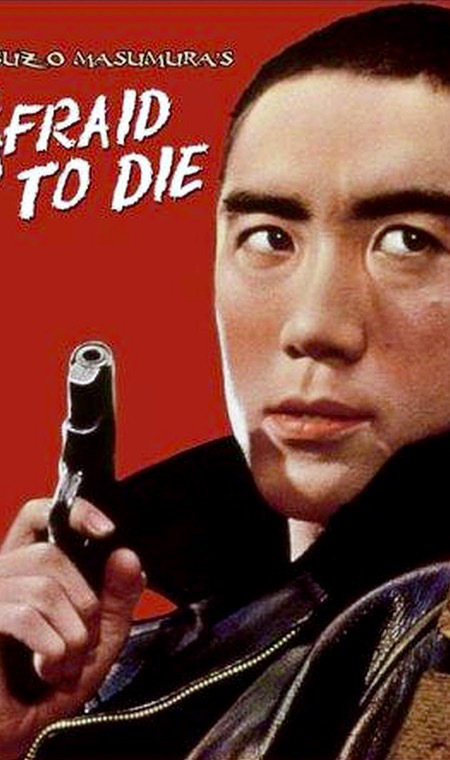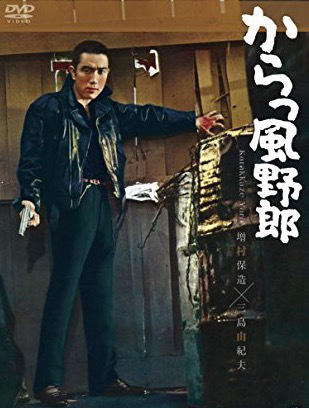
I watched in Masumura Yasuzo’s relatively garish yakuza film “Karakkaze yaro” (“Blown by the wind,” though titled Afraid to die” in English) to look at Mishima Yukio ca. 1960. The title comes from a prison guard’s question; Takeo is not afraid is less eager than Mishima himself was). The PFA screening I saw was part of a Masumura series, but I think that more of the capacity audience was drawn by Mishima rather than by Masumura (of whom, I confess, I’d never heard before this series).

Even though I was busy scanning Mishima’s face and body (and Shimura Takashi’s tattoos) the film dragged a bit and seemed formulaic. I didn’t think that Mishima’s body was (yet) that built up. His biceps were hard, but his pecs were then less developed (not just in comparison to today’s Nautilusized bodies, but to later pictures of him). His legs (only partially shown) appeared a bit skinny (body builders focus above the waist). He had thick armpit hair and eyebrows and a clump of cleavage hair. Closely cropped hair, long face, long ears, pouty lower lip, strong chin—almost simian-looking, especially when he hunched his shoulders. Long sideburns (for 1960), a black leather jacket in most scenes, black shirts in all (looking quite dapper with a white jacket in the train station finale).
Masumura’s visual sense was very pop (i.e., colorful and humorous, especially the jack-in-the-box gangs at a crucial confab). Takeo (Mishima) and Yoshie (Ayako Wakao) ride a carousel, kidnap a child, and have some rough sex (the audience didn’t know whether to laugh or to cringe at him smacking her around and thereby inspiring her determination to bear his child).

I wanted to laugh at the death scene on an escalator. Chuck Stephens described Masumura’s films as “seriously berserk and sumptuously nihilistic.” This fits the last scene particularly well. Takeo knows he’s doomed (which can be taken for nihilism, but Yoshie is extremely resilient (and just as stubborn). The major question is whether Mishima knew he was posturing. I’m pretty sure that Masumura did.
Charles Boyer was more expressive (not to mention more sympathetic) as a doomed gangster (Pepe le Moko) in “Algiers.” What he longs for (freedom, specifically, Paris) is very clear. Mishima was less affectless than Alain Delon in Melville’s “Le samourai,” but what did either character yearn for? That the cool, elegant, very beautiful Heddy Lamar would respond to Boyer seems natural. She does not want to domesticate him, as the less glamorous concession-stand operator Ayako Wakao does Mishima. Both break through. Earlier in the filme, Takeo tells his mistress that men love only themselves, women are for wasting time with. His relenting for the pregnant Yoshie leads to his destruction, just as Pepe’s pursuit of the visitor leads to his (in both cases, others are plotting the destruction, but the proximate cause is an Eve in both instances, verdad?)
©1997, 2017, Stephen O. Murray
Advertisements Share this:





